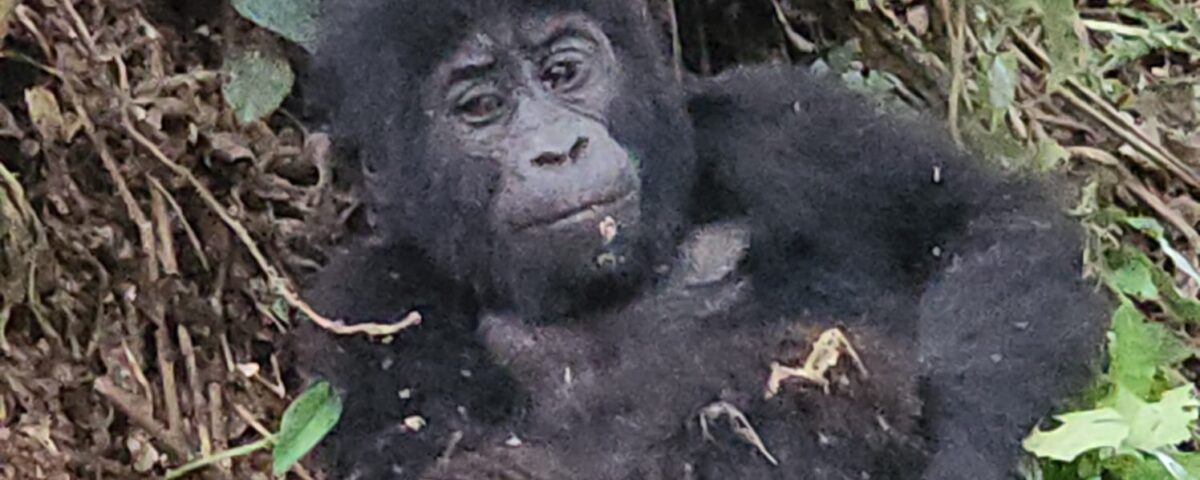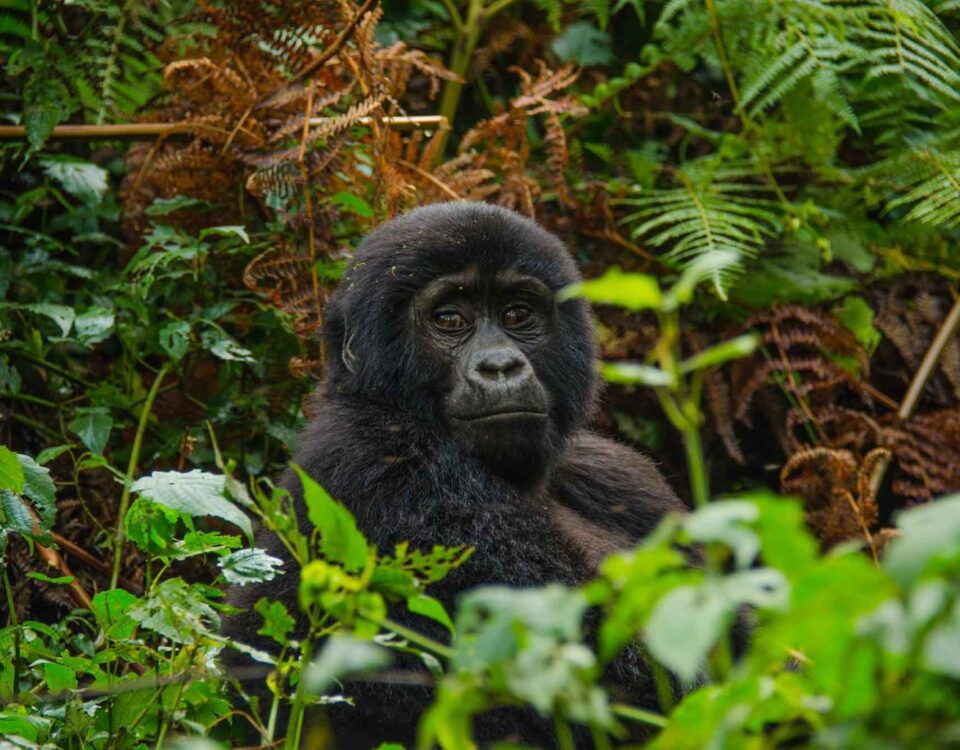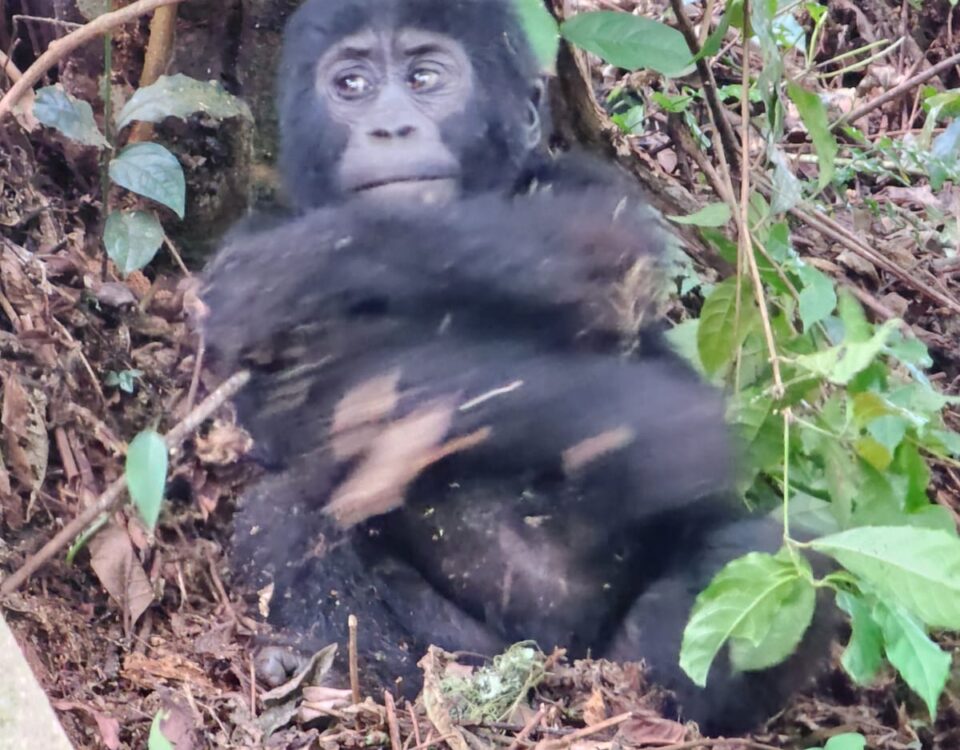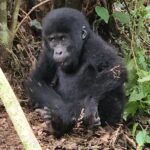
What Level of Fitness Is Needed for Gorilla Trekking?
March 21, 2025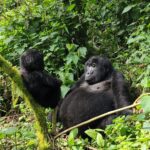
Is Uganda or Rwanda Better for Gorilla Trekking?
March 25, 2025Is It Safe to Go Gorilla Trekking in Uganda? A Comprehensive Guide by Samz Tours Uganda
Is It Safe to Go Gorilla Trekking in Uganda? Gorilla trekking in Uganda is a unique and once-in-a-lifetime adventure, offering travelers the opportunity to observe the endangered mountain gorillas in their natural habitat. Located in Bwindi Impenetrable Forest and Mgahinga Gorilla National Park in Uganda’s southwest, these protected areas attract thousands of visitors annually, eager to experience the majesty of these gentle giants. However, with such an extraordinary adventure comes a set of important safety considerations.
Many prospective trekkers are understandably concerned about their safety before embarking on such an intense journey. In this detailed guide, we will explore the various aspects that contribute to the safety of gorilla trekking in Uganda, addressing key concerns like health, security, trekking conditions, and preparedness. At Samz Tours Uganda, we aim to provide you with a comprehensive overview to ensure you have a safe and memorable trekking experience.
Understanding Gorilla Trekking in Uganda
Before diving into safety considerations, it’s crucial to understand what the gorilla trekking experience entails. In Uganda, gorilla trekking typically occurs in two renowned national parks: Bwindi Impenetrable Forest and Mgahinga Gorilla National Park. These parks are located in the southwestern region of the country, an area known for its lush, hilly terrain and dense forests.
The trek itself is carefully regulated to ensure safety for both trekkers and the mountain gorillas. Trekkers are guided by professional guides and park rangers, who ensure that the guidelines for safe interactions with the gorillas are strictly followed. Gorilla trekking requires hiking through dense, often steep, forest paths, which can be physically demanding. The duration of the trek can vary from a couple of hours to an entire day, depending on where the gorillas are located. Once the gorillas are found, trekkers can observe them from a safe distance, respecting their natural behavior while capturing unforgettable moments.
In addition to the trek itself, the experience includes important rules and regulations, such as maintaining a safe distance from the gorillas and adhering to specific protocols designed to protect both human and gorilla health.
Health and Safety Precautions: Staying Healthy During Your Trek
Physical Fitness and Health Considerations
Although gorilla trekking is not considered an extreme sport, it does require a moderate level of physical fitness. The terrain in Uganda’s gorilla trekking parks, especially in Bwindi Impenetrable Forest, is often rugged, with steep hills, dense vegetation, and muddy paths. This means trekkers need to be prepared for challenging conditions that may include slippery trails, unpredictable weather, and occasional uphill climbs.
It’s important to prepare for a trek that could last several hours. While some gorilla families may be relatively close to the starting point, others may require a longer hike through the forest. For trekkers with pre-existing health conditions, such as heart problems or joint issues, it’s highly recommended to consult with a healthcare provider before embarking on the trek. If physical activity could exacerbate any health concerns, alternative wildlife experiences should be considered.
Health Risks and Disease Prevention
One of the most significant health risks when it comes to gorilla trekking is the potential for disease transmission between humans and gorillas. Mountain gorillas share approximately 98% of their DNA with humans, making them vulnerable to human diseases such as the flu, colds, and respiratory infections. To mitigate this risk, the Uganda Wildlife Authority (UWA) enforces strict health protocols during gorilla trekking.
Health Screenings
Before participating in gorilla trekking, trekkers are required to undergo a health screening. This screening helps ensure that those showing symptoms of infectious diseases (like a cold or flu) are not allowed to trek, thus protecting the gorillas from potential illness.
Mask-Wearing Protocols
In order to reduce the transmission of airborne diseases, all trekkers are required to wear masks while in the presence of gorillas. This practice is strictly enforced for both trekkers and guides. The masks are an essential part of ensuring the safety of both humans and gorillas.
Social Distancing
Trekkers must maintain a safe distance of at least 7 meters (21 feet) from the gorillas. This guideline minimizes the risk of direct physical contact and helps reduce the potential for disease transmission.
Vaccinations and Health Preparation
For those planning to travel to Uganda for gorilla trekking, certain vaccinations are recommended to ensure both personal and public health. These vaccinations may include Yellow Fever, Hepatitis A and B, Typhoid, and Tetanus. Although the Ugandan authorities do not mandate the Meningitis vaccination, it is highly recommended for travelers from certain countries. Ensuring that you are up-to-date on these vaccinations will provide peace of mind during your trip.
Security and Personal Safety: Ensuring a Safe Trekking Experience
Security in Uganda: A Safe Destination for Travelers
Uganda has made great strides in ensuring the safety of its visitors. Over the past two decades, the country has experienced significant political stability, and tourism is a key economic driver. The government of Uganda has worked diligently to secure tourist hotspots like Bwindi and Mgahinga, which are under the watchful eye of local law enforcement and the Uganda Wildlife Authority (UWA).
The areas where gorilla trekking takes place are in remote, protected regions, but they are well-guarded by armed park rangers and security personnel. As a result, Uganda is considered a relatively safe destination for travelers. Samz Tours Uganda partners with expert local guides and rangers who ensure that your trek will be safe, enjoyable, and well-managed at every stage.
Ranger Support and Emergency Protocols
Each gorilla trekking group is accompanied by an experienced guide and a team of park rangers who are responsible for ensuring the safety of both trekkers and gorillas. These rangers are highly trained in handling various situations, including any potential encounters with aggressive gorillas. While mountain gorillas are generally peaceful, they are wild animals, and their behavior can sometimes be unpredictable. Having trained rangers on-site adds a significant layer of security.
In the unlikely event of an emergency, such as injury or health complications, the trekking areas are accessible by road, and evacuation procedures are in place. Medical support is available, and trekkers will be quickly transported to the nearest medical facility if necessary.
The groups are small, with a maximum of 8 trekkers per gorilla family, ensuring a personalized experience and reducing the potential for overcrowding or undue disturbance to the gorillas. This arrangement not only contributes to the safety of the trekkers but also helps maintain the calm and natural behavior of the gorillas.
Trekking Conditions and Preparation: What You Need for a Safe Trek
Terrain and Weather: Being Prepared for the Conditions
The terrain in Bwindi Impenetrable Forest and Mgahinga is often steep, muddy, and challenging to navigate. The trails can become slippery, especially during Uganda’s rainy seasons (from March to May and October to November), which makes sturdy hiking boots and rain gear essential. Trekkers are also provided with walking sticks to help navigate the trails, which can be muddy and uneven.
Weather conditions can change rapidly, and trekkers should be prepared for varying conditions. A waterproof jacket, comfortable clothing, and sturdy boots are essential to ensure your safety and comfort during the trek. A hat, sunscreen, and insect repellent are also recommended to protect against the elements and local insects.
Trekking Experience and Guide Expertise
The guides who lead gorilla treks are highly trained and possess in-depth knowledge of the local environment, gorilla behavior, and safety protocols. They are skilled in guiding visitors safely through the forest while ensuring that trekkers maintain a respectful distance from the gorillas. This expertise ensures that you can fully immerse yourself in the experience without compromising your safety or the well-being of the animals.
Conclusion: Is Gorilla Trekking in Uganda Safe?
Yes, gorilla trekking in Uganda is undoubtedly safe when all safety guidelines and health precautions are followed. The trek itself, while physically demanding, is well-managed and regulated by the Uganda Wildlife Authority. With the support of highly trained guides and park rangers, both the trekkers’ safety and the protection of the gorillas are prioritized. By taking necessary health precautions, such as vaccinations and adhering to mask-wearing and social distancing rules, you ensure a safe, enjoyable, and memorable experience.
Samz Tours Uganda is committed to ensuring that your gorilla trekking adventure is safe, enriching, and truly unforgettable. With proper preparation, including physical fitness, vaccinations, and understanding the trekking guidelines, you can embark on one of the world’s most awe-inspiring wildlife experiences without worry. Ready to embark on your journey to meet the majestic mountain gorillas? Let Samz Tours Uganda help you plan the adventure of a lifetime!

